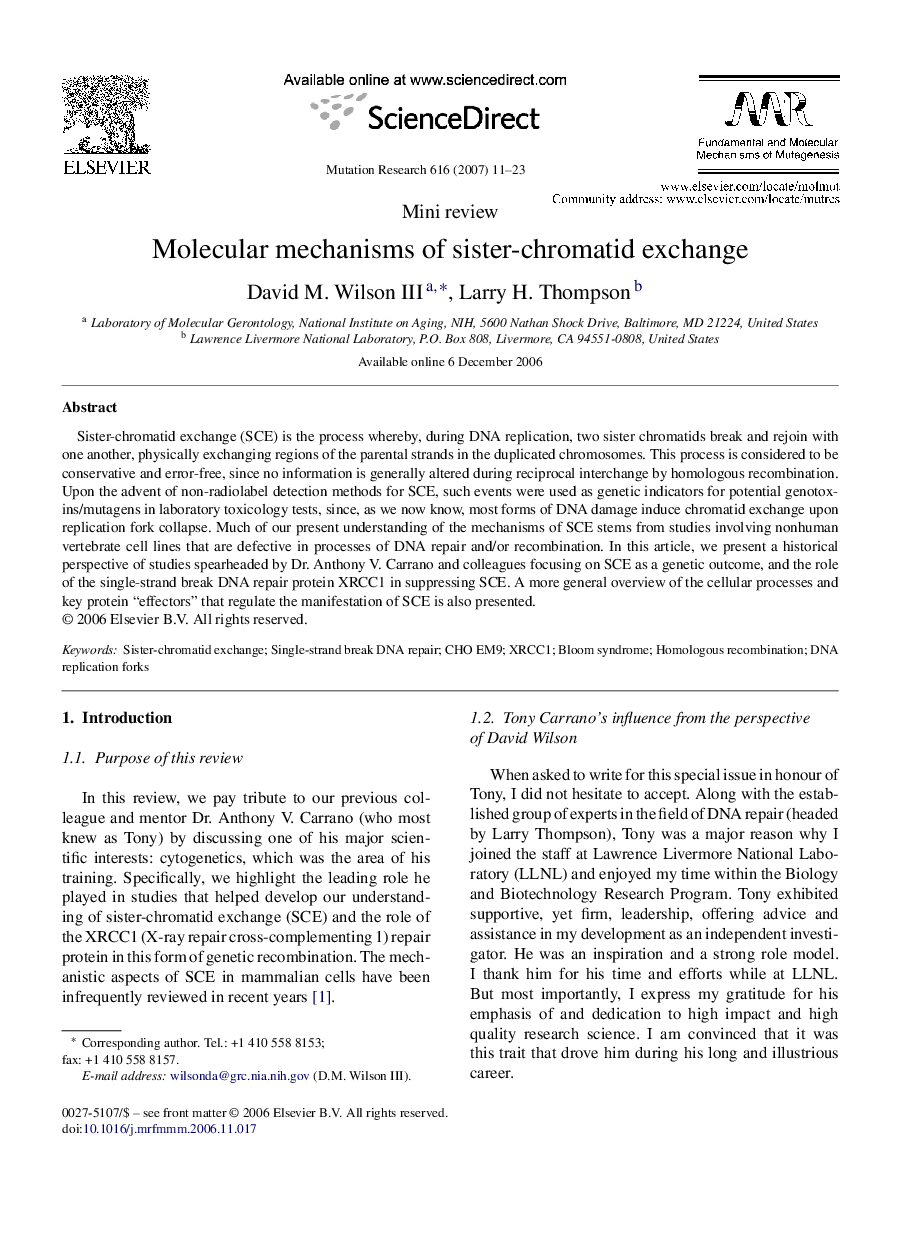| کد مقاله | کد نشریه | سال انتشار | مقاله انگلیسی | نسخه تمام متن |
|---|---|---|---|---|
| 2147425 | 1548413 | 2007 | 13 صفحه PDF | دانلود رایگان |

Sister-chromatid exchange (SCE) is the process whereby, during DNA replication, two sister chromatids break and rejoin with one another, physically exchanging regions of the parental strands in the duplicated chromosomes. This process is considered to be conservative and error-free, since no information is generally altered during reciprocal interchange by homologous recombination. Upon the advent of non-radiolabel detection methods for SCE, such events were used as genetic indicators for potential genotoxins/mutagens in laboratory toxicology tests, since, as we now know, most forms of DNA damage induce chromatid exchange upon replication fork collapse. Much of our present understanding of the mechanisms of SCE stems from studies involving nonhuman vertebrate cell lines that are defective in processes of DNA repair and/or recombination. In this article, we present a historical perspective of studies spearheaded by Dr. Anthony V. Carrano and colleagues focusing on SCE as a genetic outcome, and the role of the single-strand break DNA repair protein XRCC1 in suppressing SCE. A more general overview of the cellular processes and key protein “effectors” that regulate the manifestation of SCE is also presented.
Journal: Mutation Research/Fundamental and Molecular Mechanisms of Mutagenesis - Volume 616, Issues 1–2, 1 March 2007, Pages 11–23